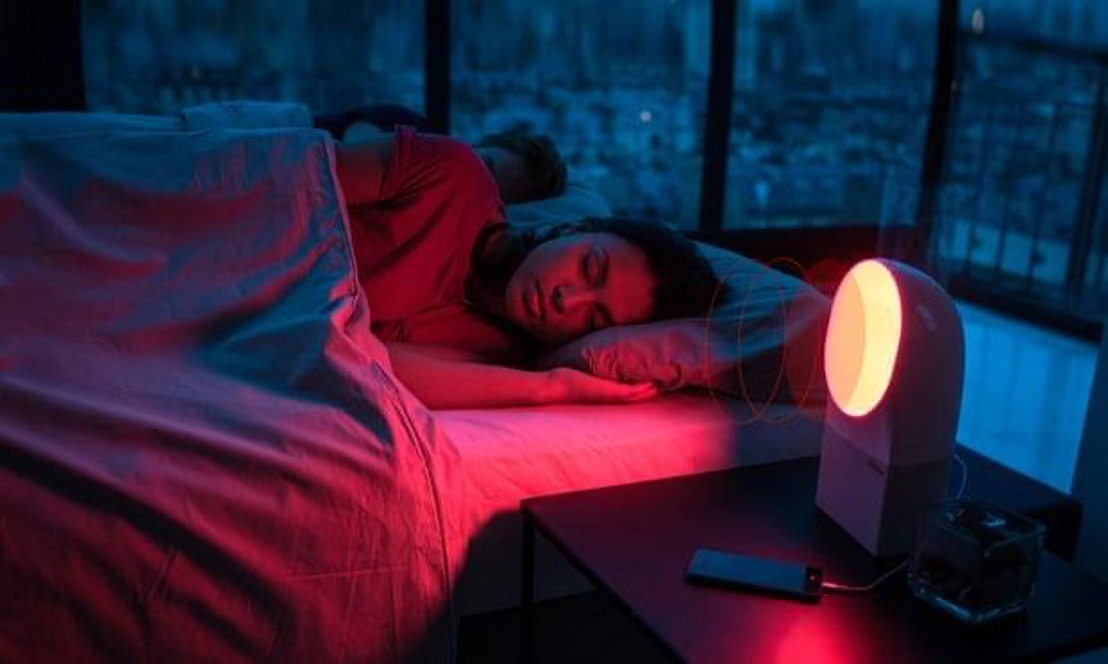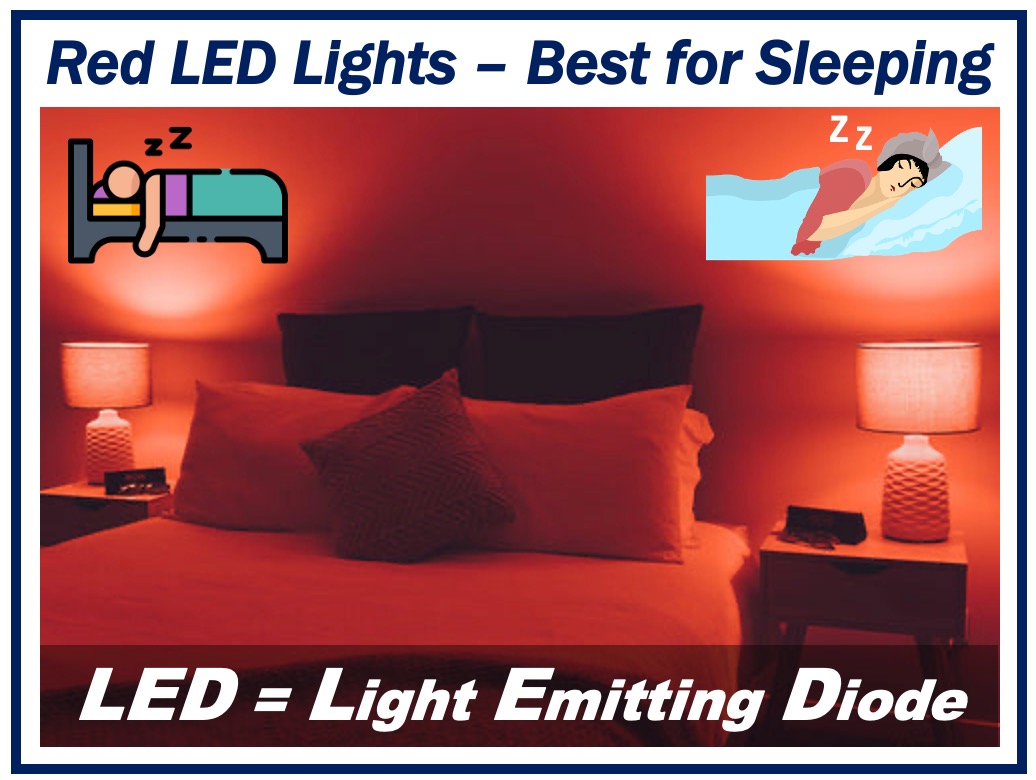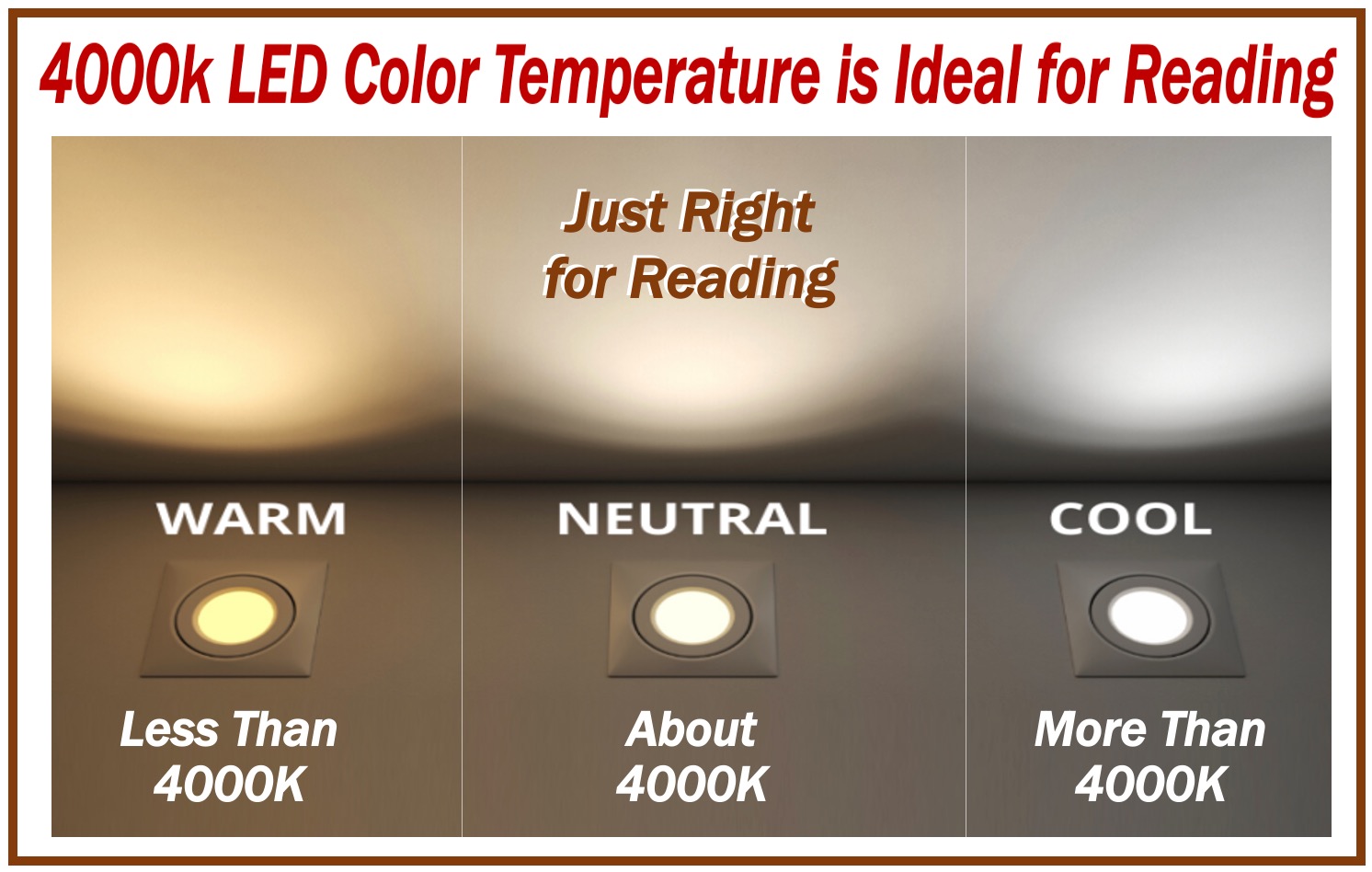Before answering what color LED light helps you sleep, you first need to know that we normally sleep better without any light. But even though LED light might prevent us from falling asleep, it might help us fall asleep. What is the relationship between LED light color and the human brain? How does it affect our sleep?

You may also be concerned about which color helps or hinders sleep, which color helps you relax or focus, what’s the best LED color, lighting tips to improve sleep habits, and more. Don’t worry, we’ll discuss it all. Read on for more information!
1. An Important Factor in Falling Asleep – Melatonin
When it comes to sleep, you can not but know about melatonin. The pineal gland in the human brain secretes a hormone called melatonin, which can regulate sleep. It has a very good regulating effect on patients with sleep disorders.
The secretion of melatonin has an obvious time rhythm. Inhibited by light during the day, the level of melatonin secretion is lower. At sunset, as the light slowly fades, it stimulates the pineal gland to start releasing melatonin. And at dawn, the melatonin secretion gradually drops to the lowest level. What’s more, whether it is natural light or artificial LED light, both affect melatonin secretion, which in turn affects our sleep.
Melatonin levels increase during nighttime because of darkness and reduce during daytime due to light. It regulates your sleep-wake cycle and circadian rhythm by helping you sleep faster, longer, and better. Melatonin binds with specific brain and body receptors to relax and minimize dopamine levels and nerve activity. Hence, a good level of melatonin inside your body may also help reduce the effects of jet lag, a sleep disorder caused by traveling through different time zones.
2. The Relationship Between LED Light Color and Sleep
Any light can have an impact on our sleep, and LED lighting is no exception. At the back of our eyeballs are light-sensing cells called intrinsically photosensitive retinal ganglion cells (ipRGCs). If the light is bright enough or persistent enough, it will react to any light, including LED light. ipRGCs send signals to brain tissue – the suprachiasmatic nucleus, to adjust the circadian timing of the biological clock in every cell of our body. So that the biological clock and body cells are synchronized with each other and with the external time of day.
Also, LED color works through human vision. When human eyes come into contact with different LED light colors, the associations and reactions made by the brain’s nerves also vary. So LED colors have a direct impact on human psychology. Of course, it also affects our sleep.
3. Which LED Light Color is the Most Helpful to Sleep?

Red LED light is most helpful for sleep. It is the most sleep-friendly color. This is where red light therapy comes into play. It utilizes visible light with 620 to 700 nanometers to help control circadian rhythms. Due to its shorter wavelengths, red light seeps through the skin to positively affect your body. For example, if you’re hurt, it can help mitigate pain and reduce inflammation and pain, which can later help promote better physical and emotional sleep.
Moreover, red light therapy, which helps improve sleep quality, is a good example of this. Exposure to the red light before and during sleep prevents the groggy feeling (or sleep inertia) we experience when we wake up. This groggy feeling is one of the side effects of chronic sleep deprivation. Red LED lights have been shown that they may alleviate sleep inertia and provide you with better sleep. Also, red or amber LED lights can help us feel calmer at night and boost melatonin production.
That said, there’s no question why red LED light is most helpful for sleep nowadays. Thankfully, many red light therapy devices are available to help your sleep quality and ensure you get the most out of their benefits to sleep well at night. Additionally, some red light therapy beds are available for home use, allowing you to conveniently incorporate red light therapy into your bedtime routine for improved sleep quality.
On the other hand, it is worth mentioning that the red light can be replaced by other LED light colors of similar wavelength, such as yellow, pink or other reddish LED colors. But total darkness is always a better option.
4. Which LED Light Color is the Most Harmful to Sleep?
Blue LED light is most harmful to sleep, and it is the main culprit behind people’s poor sleep quality. Our photoreceptor cells, ipRGCs, are most sensitive to blue light wavelengths from 450nm to 480nm. The artificial light of modern society and the blue light on our electronic screens – computers, tablets, mobile phones, and LED TVs are not sleep-friendly.
Using blue LED strip lights in bedroom lighting can prevent melatonin secretion, which disrupts our sleep and confuses natural circadian rhythms. And the bright and cool white light color temperature is able to wake up your brain, improve alertness and wakefulness. It is not conducive to sleep. Not too badly, we can use blue light blocking glasses or a blue light filter for your device to reduce the effects of blue LED light on sleep.
5. What Color LED Light Helps to Relax?
Warm color LED lighting helps people de-stress and relax after a long day at work. LED light in warm colors such as amber, yellow, orange, red, and pink convey a warm and sunny mood and make people feel relaxed. In a warm light environment, a large amount of melatonin is secreted, and people gradually relax their bodies and enter a sleep state. Work at sunrise, rest at sunset. This is how people lived before artificial light sources. During sunrise and sunset, the color temperature of the light is about 2,000 Kelvin.
Reproducing red or orange color temperatures similar to sunrise and sunset is ideal for sleep and relaxation. Therefore, the bedroom LED lighting design is suitable for using warm LED colors. Conversely, cool colors LED lights such as blue and green increase focus and suppress melatonin production. Especially under high-brightness LED 7000K white light color temperature, people’s brainwave activity is the highest, and the feeling of fatigue is the strongest. Thus, the LED bedroom lighting should avoid high brightness and high color temperature white LED light.
6. Which LED light Color is the Best for Human Eyes?
To put it simply, warm-color LED lights are friendly to the eyes, while cool-color LED lights are burdensome for the eyes. Yellow light is the least harmful LED light for human eyes. Twilight at dawn and the faint yellow glow of incandescent lamps are the most common types of yellow light.
Our sensory cells are extremely sensitive to blue LED lights. Our eyes feel hurt when exposed to blue light for a long time, and blue LED light can affect melatonin secretion and disturb our sleep. This is why you should avoid bright electronic devices before bed.
7. Best LED Strip Light Color for Bedroom Reading

The most suitable for bedroom study and work is the natural white 4000K LED color temperature, which strikes a good balance between high LED color temperature and low LED color temperature. Above 4000K, the color temperature increases, and the blue tone of the LED lights increases, which is harmful to the eyes. And the warm light with lower color temperature is not bright enough, which is easy to cause eye fatigue. Therefore, the 4000k neutral white led strip lights in the middle position is the first choice for reading in the bedroom, which is bright and not dazzling.
8. LED Lighting Tips to Improve Sleep Habits
Turn off LED lights to give your body time to secrete melatonin to help you fall asleep. Use warm-toned LED bedroom lighting to create a relaxing and calming atmosphere. Avoid blue lights and bright LED lights before bed. Bedrooms should avoid high-brightness LED lights to reduce alertness and create a comfortable environment that makes you sleepy. Finally, sleep quality deserves attention. Poor sleep and the resulting tiredness can make us less healthy and less productive in the short and long term.

